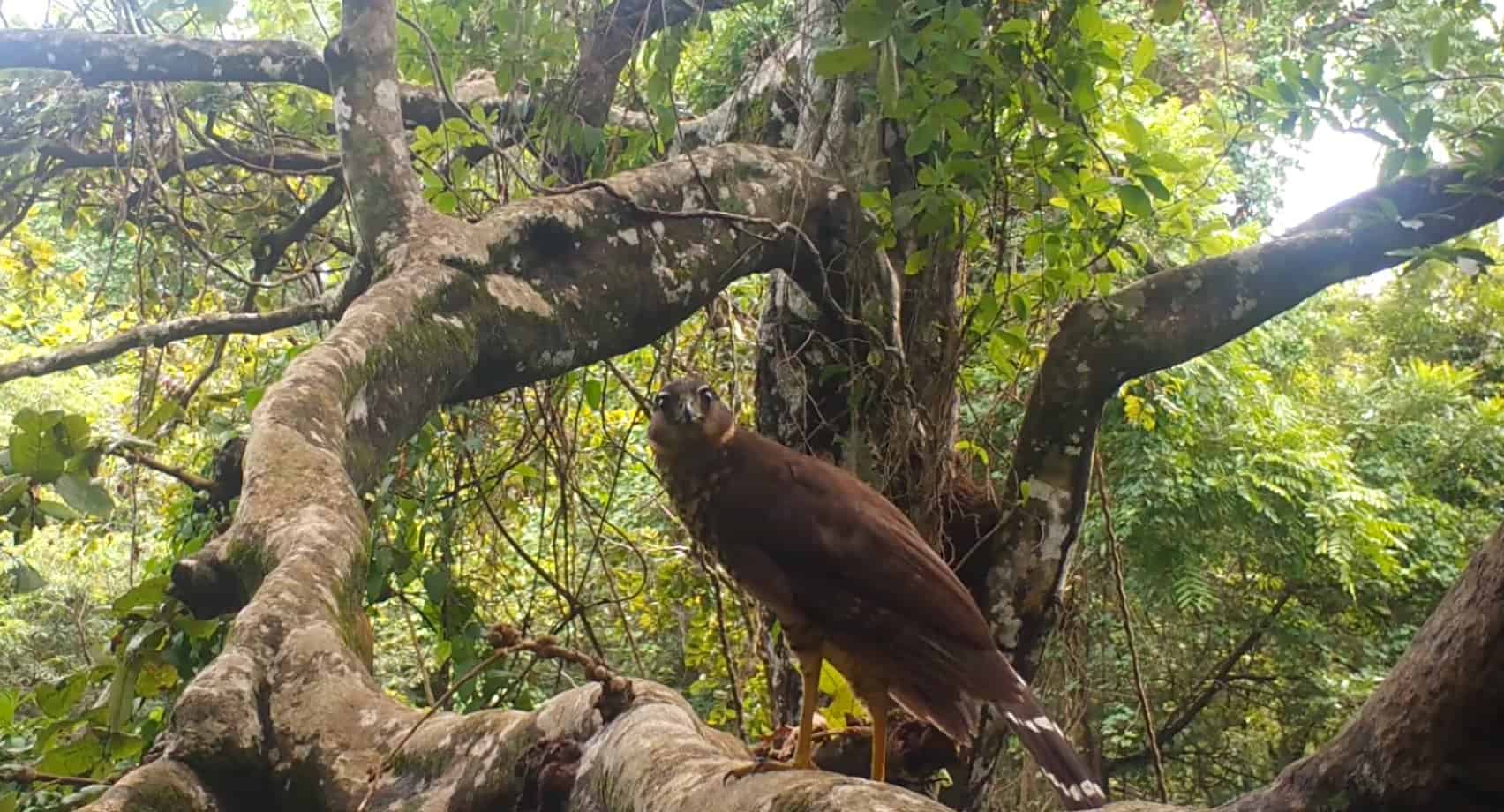Today we meet the collared forest-falcon. It’s a pretty bird of prey that likes to eat iguanas and pose for my camera traps.
The collared forest-falcon (Micrastur semitorquatus) is known as the halcón de monte collarejo in Spanish, which is a pretty direct translation. Many birds and mammals have de monte is their Spanish name which generally means of the mountain, of the forest or wild. One time, a Tico friend was explaining the work I do to another Tico guy who was suspect of my ability to spend the entire day in the forest, and he assured him that I was ‘de monte’ and when I overheard it, I could feel a little swell of pride in my chest.
In my head, collared forest-falcons are categorized as ‘common uncommon birds of prey.’ Costa Rica is home to many species of hawks, kites, falcons, and eagles. Many of which I have never seen and probably will never see. Others, like the roadside hawk, common black hawk, and gray hawk are so common that I can spot all three during the car ride from my house to the grocery store. Collared forest-falcons are somewhere in between. I see and hear them frequently enough that it’s not an ‘Oh my gosh!’ situation, but their presence is always a little more appreciated than the birds that I see on a daily basis.
Collared forest-falcons live in a range over much of Costa Rica. They can be found along both coasts and most low laying areas but are absent from the high elevations of the center of the country. As their name points out, they’re usually found in the forest. They hunt in a range of forests from areas with big mature trees to scrubby secondary growth forests.
When on the hunt, they perch in the lower levels of the forest, keeping a sharp eye out for their prey. They eat a range of small animals including large lizards, rodents, birds, and even invertebrates flushed out of the forest floor evading army ants. They either spot their prey and pounce down on it before it knows what’s happening or actively chase after it, showing off their speed and agility.
I’ve recorded collared forest-falcons on the hunt several times. A few times I’ve recorded them pouncing on black spiny-tailed iguanas, subduing them with a few bites to the back of the neck, and flying off. Once I recorded one confronting an agouti at a water source, but the agouti didn’t run away and didn’t look particularly frightened, so I figured they were probably too big to eat. Then, a few years later I recorded a collared forest-falcon very much attempting to ambush an agouti from above (it just missed), so they seem to be on the menu after all.
Though they aren’t terribly common, I end up recording more collared forest-falcon videos than I would typically expect. In researching this article, I think I’ve realized why. The low level, mostly horizontal tree limbs without a lot of small branches and leaves in the way are the perfect place for them to perch and search for prey.
Those same tree limbs are low enough that I can climb up there and not die, and they lack the small branches and leaves that would continuously trigger my camera. So, it turns out, we like the same branches. So, click on the video below and meet the ‘common uncommon’ collared forest-falcon.
About the Author
Vincent Losasso, founder of Guanacaste Wildlife Monitoring, is a biologist who works with camera traps throughout Costa Rica. Learn more about his projects on facebook or instagram. You can also email him at: vincent@guanacastewildlifemonitoring.com






